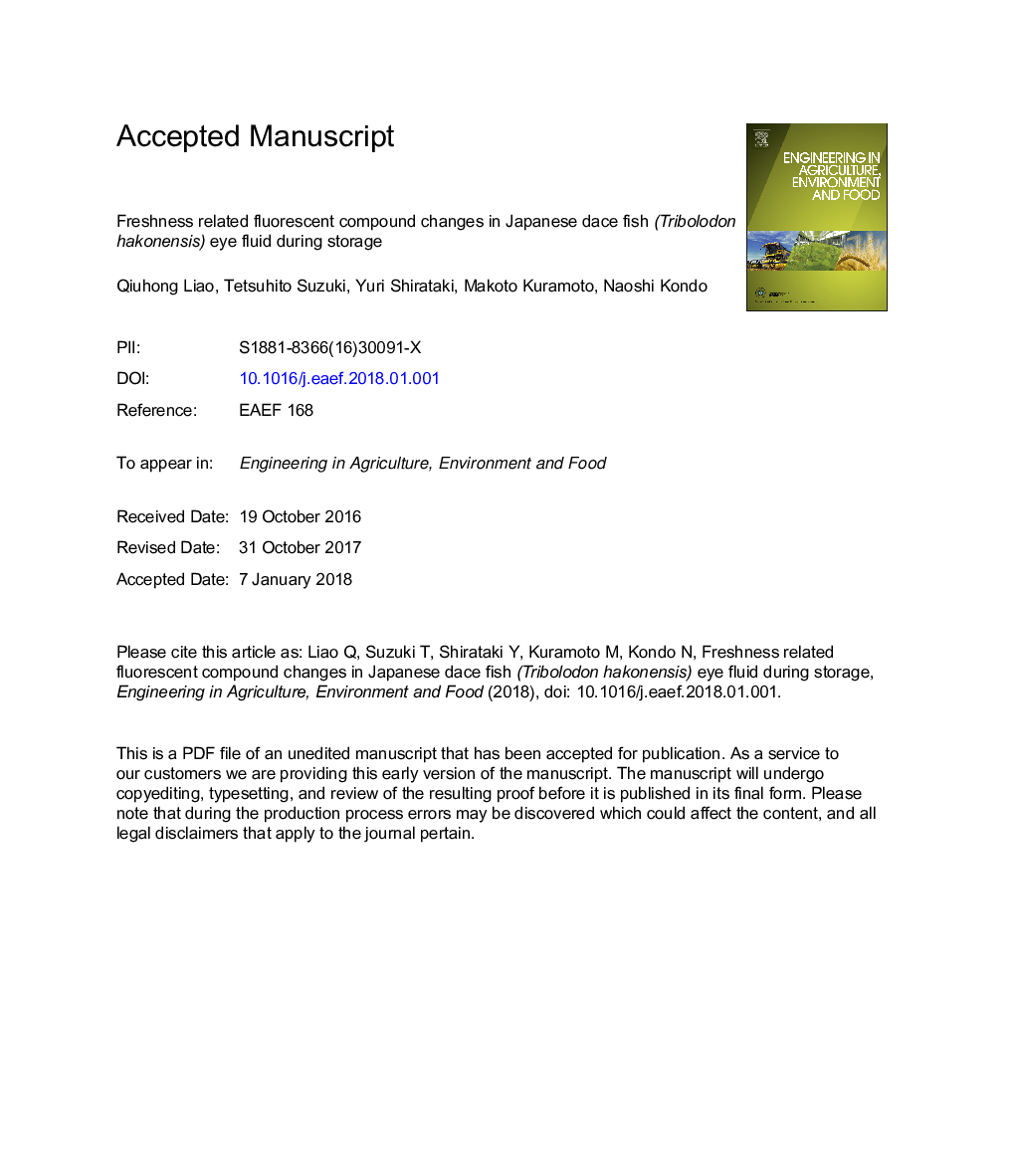| Article ID | Journal | Published Year | Pages | File Type |
|---|---|---|---|---|
| 8959378 | Engineering in Agriculture, Environment and Food | 2018 | 24 Pages |
Abstract
The main fluorescent compounds in Japanese dace fish (Tribolodon hakonensis) eye fluid associated with freshness were distinguished and their time-dependent changes with storage were observed. For this experiment 95 fish were stored at 20â¯Â°C for 36â¯h, meat from the dorsal part was sampled at different storage times and used to measure K value, a standard freshness index. At the same time eye fluid was collected from the fish for fluorescence spectra acquisition and biochemical analysis. K value results showed the fish remained fresh up until 18â¯h of storage, and then deteriorated quickly thereafter. While aromatic proteins and amino acids were confirmed to be the main fluorescent compounds in eye fluid, they showed a complicated change during storage. Fluorescent compounds of uric acid, closely associated with freshness, had low intensity values at the start of storage, with values raising sharply later in storage; showing an exponential increase during storage. Dityrosine was found to be present only at a very late stage of storage. These results indicate the connection between specific fluorescent compound changes and the progression of storage could be employed as a meaningful predictor of fish freshness.
Related Topics
Life Sciences
Agricultural and Biological Sciences
Agronomy and Crop Science
Authors
Qiuhong Liao, Tetsuhito Suzuki, Yuri Shirataki, Makoto Kuramoto, Naoshi Kondo,
